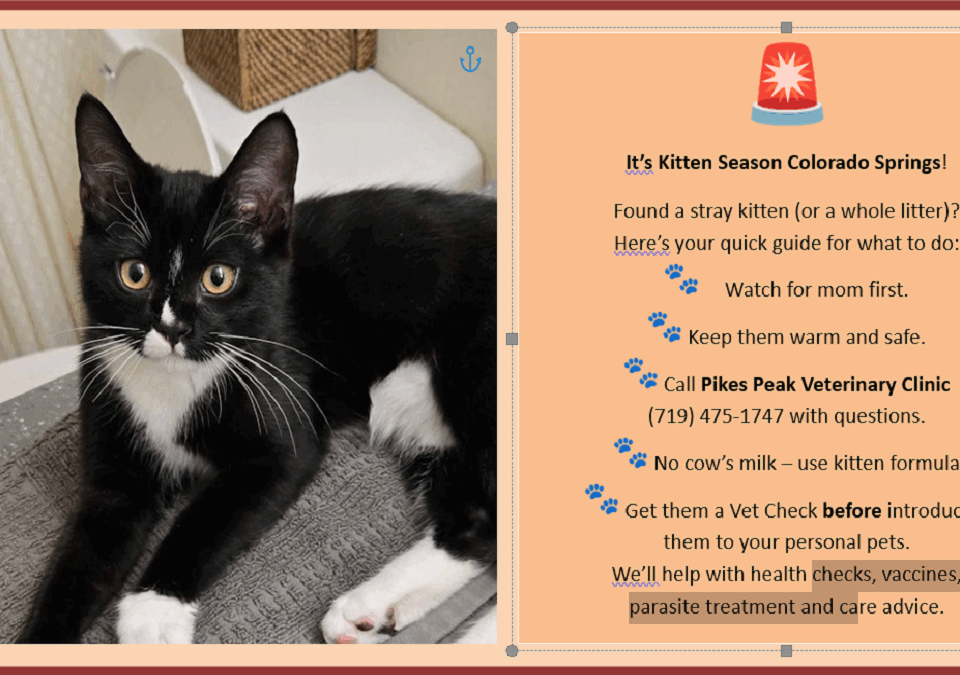**ADOPTED** Mama Cat and Son Need a Home
April 2, 2020Cuterebras Get Under Your Pets’ Skin!
August 10, 2020By Michele E. Mukatis with thoughts from PetMD and our own Drs. Fowler and Clevenger
Photo Credit: Peggy und Marco Lachmann-Anke from Pixabay
As the world gets kookier and kookier – storms, fires, viruses and more – it puts us in mind that we should have an emergency kit made up not just for ourselves, but for our pets.
Cats are unique in their needs, so today’s blog, much of which was culled from petmd.com, will focus on how to keep your kitties safe in an emergency. Here are the basics to consider and have at the ready for EACH of your cats:
- Know where your cat is likely to hide if they are stressed. The last thing you want to do is be hunting for your cat if you need to leave in a hurry!
- Have two pet-friendly places to which you could evacuate planned, one close-by for a local emergency like a flood personal to your home and one further away in case of a bigger disaster.
- Make sure that your carrier(s) and related items will fit in your car. The second to last thing you want is to suddenly realize that you can’t get everyone in with you!
- Spend a little time training your cat to like its carrier. Can you imagine trying to put an untrained cat into a halter or collar and leash?! A little time up front training your cat to use the carrier will do you all a world of good. Leave it open and put treats and/or toys in it so they start to associate it with good events and get used to it just being another place for them to play.
- Make sure the carrier has a tag on it with your name, your cat’s name and contact information. A Sharpie will do in a pinch, but a tag is better.
- Collar and tags should be on your cat or in your emergency kit at all times.
- Old towels to line the bottom of the carrier – Thinner ones will dry more quickly in case there’s an accident.
- Litter pan – a small aluminum roasting pan works well and usually comes in a package of two or three, so you can nest them and reuse until they need to be permanently cleaned out and recycled.
- Zip lock bag filled with cat litter – Use it sparingly in order to dump and refill the pan rather than scoop.
- A few small garbage bags will always come in handy. They can act as a liner, carry items, or just hold trash as needed.
- Latex gloves
- Food and water bowls. There are collapsible bowls that can hold food and water without leaking or just lay flat when they are not in use.
- Canned cat food with flip-top lids or a sealable lid. Throw in a small manual can opener, just in case you can’t get flip-top food. Canned food provides necessary hydration, but if your cat is used to dry food, include some of that as well.
- A small water bottle: 8 ounces should last a cat for three days.
- Having a microchip for your kitty is a must! Make sure your contact information is up to date with your veterinarian’s office and your microchip company. If you don’t know if your cat’s chip is up to date, bring them to us for a quick scan. We can let you know how to update the information if necessary.
- A waterproof envelope containing important documents such as:
- A few pictures of your cat, some of which include you to help identify you as the owner.
- City license number
- Microchip number, the name of the company issuing it and any corresponding paperwork.
- Veterinary records including vaccination history and any other health issues your cat has.
- Phone numbers for your regular veterinary clinic and a nearby 24-hour emergency hospital.
- Pet First-aid Kit:
- Blunt-tipped scissors to trim hair, cut bandaging material, or make paper snowflakes when you get where you’re going.
- Bandages: The Andover Healthcare PetFlex paw print dog, cat and small animal bandage won’t stick to skin or fur and is made with a material that applies pressure while reducing the chances of cutting off circulation.
- Sterile eye solution to flush an irritant. However, if your cat is rubbing its eyes, you want to try to get them medical attention as soon as possible to avoid permanent damage. Nutri-Vet cat eye rinse is designed specifically for cats!
- A plastic syringe to give oral medications or use just to hydrate a stressed kitty!
- Tweezers are always helpful to have in any emergency kit.
- A two week supply of any medications your cat takes
- Pet-safe antiseptic wipes: If you’re assembling a kit for both dog and cat first aid, look for products like the Pet MD chlorhexidine antiseptic dog and cat wipes. They are sting-free and safe for both species.
- Instant cold pack: If they are injured, this will help with inflammation.
- If your kitty is comfortable with being handled, a thermometer can be useful. If not, and they are likely to get stressed and someone may get hurt trying this. If you think your cat can handle it, read up on the way to safely check your pet’s temperature.
- Treats! These come in handy in every situation!
It’s a lot to take in, but if you assemble all of this ahead of time, you will be ready in case something unexpected happens and will be so relieved that you don’t have to add this to your list in an emergency!






